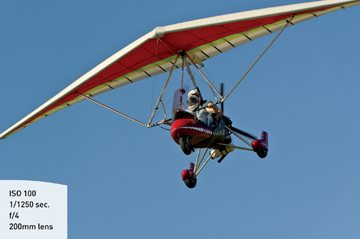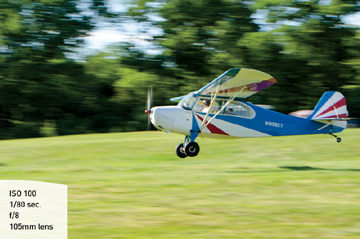Aperture, Shutter Speed and ISO
The technicality of a camera is vital to the overall production of moving image. There are three predominant settings that are paramount to consider.
ISO, which is ultimately the sensitivity of the camera towards a light source, determines how much grain or noise will affect the end product. Lowering the ISO value, will ultimately decrease the level of sensitivity, whereas increasing the ISO number will result in greater sensitivity. The element within the camera, which alters sensitivity, is the camera sensor. It is the part of the camera, that is responsible for gathering light and transforming it into an image (Photography Life 2009).

A higher ISO value allows you to capture within a low-light environment, however the higher the sensitivity, the more grain is introduced to the shot (as displayed within the image above).
The Shutter Speed function, is what determines the length of time in which the camera's sensor is exposed to the available light source. Hence, the longer the shutter is open, the greater amount of time the sensor has to gather light. In low-light settings a longer shutter speed is typically required to ensure correct exposure, by allowing more light to reach the camera sensor.
One of the major influences on the sharpness of an image, is based on camera shake and the subject's movement (Slyvan 2012). This means that a lower shutter speed is allowing more light from the subject into the camera, therefore their movement may appear less sharp, or may even produce blur. A greater shutter speed will produce less blur and capture more sharply.
Aperture is responsible for dictating depth of field, therefore determines how much of your shot is in focus. This is particularly useful when trying to isolate the subject, or an object in the foreground, whilst reducing distractions from the background. Aperture is represented with f/stop values, which is effectively relates to the focal length of the camera lens divided by the diameter of the aperture; a higher f/stop number, will result in more of the shot being in focus, as less light enters the camera and a lower value will increase the aperture, by allowing more light to reach the camera sensor, therefore producing more blur.
Depth of field, along with composition, is a major factor in how you direct attention to what is important in your shot (REVELL 2011). As a result it also adds some degree of aesthetic value.
Reference List:
MANSUROV, N. (2009) Photography Life: Understanding ISO [Online] Available from: https://photographylife.com/what-is-iso-in-photography [Accessed: 16th September 2015]
SLYVAN, R. (2012) Nikon D3200: From Snapshots To Great Shots. San Francisco: Peachpit Press.
REVELL, J. (2011) Canon EOS Rebel T3i/600D: From Snapshots to Great Shots. San Francisco: Peachpit Press.
ISO, which is ultimately the sensitivity of the camera towards a light source, determines how much grain or noise will affect the end product. Lowering the ISO value, will ultimately decrease the level of sensitivity, whereas increasing the ISO number will result in greater sensitivity. The element within the camera, which alters sensitivity, is the camera sensor. It is the part of the camera, that is responsible for gathering light and transforming it into an image (Photography Life 2009).

A higher ISO value allows you to capture within a low-light environment, however the higher the sensitivity, the more grain is introduced to the shot (as displayed within the image above).
The Shutter Speed function, is what determines the length of time in which the camera's sensor is exposed to the available light source. Hence, the longer the shutter is open, the greater amount of time the sensor has to gather light. In low-light settings a longer shutter speed is typically required to ensure correct exposure, by allowing more light to reach the camera sensor.
One of the major influences on the sharpness of an image, is based on camera shake and the subject's movement (Slyvan 2012). This means that a lower shutter speed is allowing more light from the subject into the camera, therefore their movement may appear less sharp, or may even produce blur. A greater shutter speed will produce less blur and capture more sharply.
Aperture is responsible for dictating depth of field, therefore determines how much of your shot is in focus. This is particularly useful when trying to isolate the subject, or an object in the foreground, whilst reducing distractions from the background. Aperture is represented with f/stop values, which is effectively relates to the focal length of the camera lens divided by the diameter of the aperture; a higher f/stop number, will result in more of the shot being in focus, as less light enters the camera and a lower value will increase the aperture, by allowing more light to reach the camera sensor, therefore producing more blur.
Depth of field, along with composition, is a major factor in how you direct attention to what is important in your shot (REVELL 2011). As a result it also adds some degree of aesthetic value.
Reference List:
MANSUROV, N. (2009) Photography Life: Understanding ISO [Online] Available from: https://photographylife.com/what-is-iso-in-photography [Accessed: 16th September 2015]
SLYVAN, R. (2012) Nikon D3200: From Snapshots To Great Shots. San Francisco: Peachpit Press.
REVELL, J. (2011) Canon EOS Rebel T3i/600D: From Snapshots to Great Shots. San Francisco: Peachpit Press.



No comments:
Post a Comment